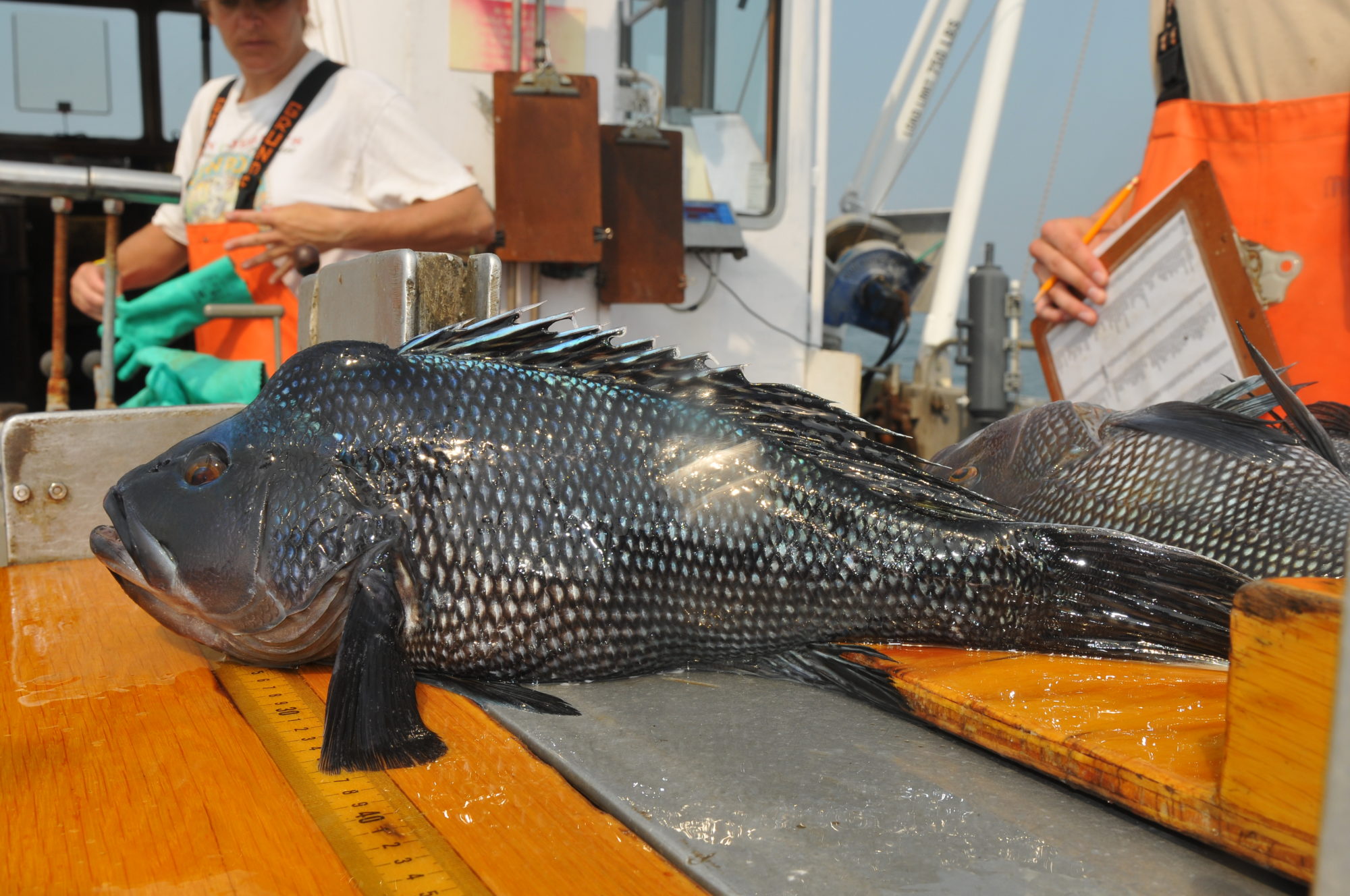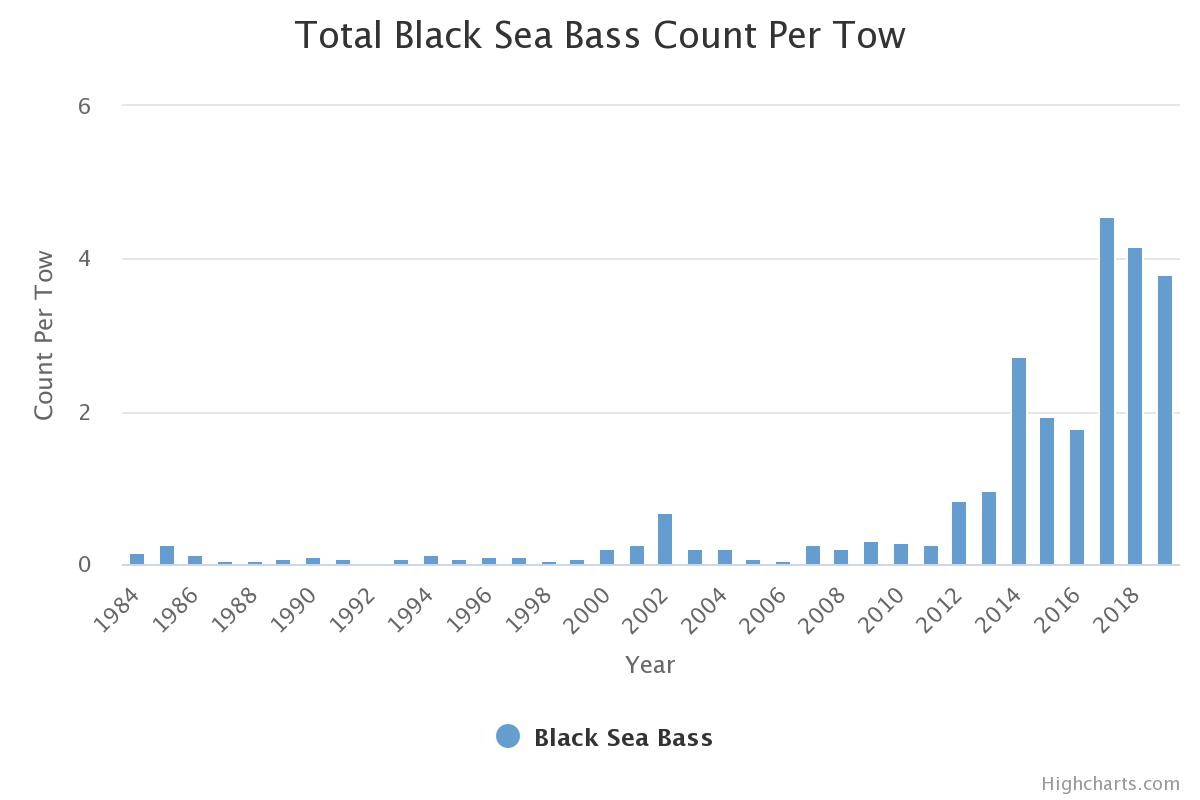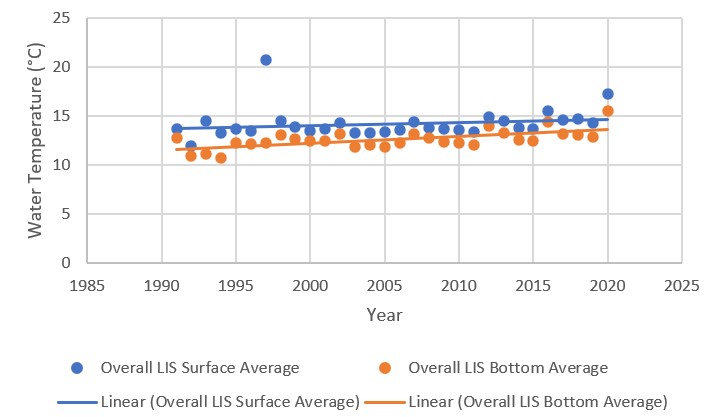Black Sea Bass Populations Increasing Rapidly in the Sound

The Long Island Sound Study (LISS) tracks a set of Ecosystem Indicators to measure the health of the Long Island Sound. A critically important indicator LISS tracks is game fish abundance, which is a reflection of the productivity of Long Island Sound and effectiveness of coast-wide fishery management plans that seek to stabilize populations while maximizing both recreational and commercial harvest opportunities. To track these abundances, Connecticut Department of Energy and Environmental Protection (CT DEEP) conducts the Long Island Sound Trawl Survey annually, in the spring and fall, since 1984. The LISS reports on various important game fish species, including bluefish (Pomatomus saltatrix), scup (Stenotomus chrysops), striped bass (Roccus saxatilis), summer flounder or fluke (Paralichthys dentatus), tautog or blackfish (Tautogo onitis), weakfish (Cynoscion regalis), and winter flounder (Pseudopleuronetes americanus). Most recently, LISS has added a new game fish species – black sea bass (Centropristis striata).

In the last decade, black sea bass abundance has increased by 1,084 percent in the Long Island Sound Trawl Survey. Historically, the species’ distribution is located along the Atlantic coast from Cape Cod to the Gulf of Mexico and are typically found near structured habitats, such as rocky bottom areas, reefs, wrecks, jetties, and other hard structures. Their prey consists of crustaceans (clams, mussels, and crabs) and other smaller fish; while their predators include bluefish, weakfish, striped bass, and sharks.
Black sea bass are classified as a warm water species, meaning the species is more tolerant of warmer temperatures compared to colder. More specifically, these species prefer water temperatures of 11-22°C or 50-72°F. Additionally, black sea bass are known to spawn between January to July. Because of their temperature adaptation and breeding history, the species are typically more abundant south of the Sound, rather than northern New England regions.
However, recent data shows that black sea bass may be experiencing a geographic range shift, or expansion, northward. The Atlantic States Marine Fisheries Commission has reported that the commercial and recreational landings (catches of marine fish) have increased, as well as the spawning stock biomass. These increases indicate that the black sea bass stock abundance is increasing, in which causes the species to search elsewhere to occupy open niches – like in Long Island Sound. However, another reason for the recent increase in abundance in the Sound may be driven by rising water temperatures. Like black sea bass abundance, water temperatures, both surface and bottom, have increased in the Sound within the last decade. This correlation is not only observed in black sea bass, but also overall warm water fish species – including 38 species, such as, striped bass and summer flounder. Warm water species are typically more abundant in the fall, while cold water species are more abundant in the spring. However, within the last decade, warm water species are now increasingly dominant in both the spring and fall seasons, and coincidentally there is a decrease in abundance of cold water species in both seasons.
This is not necessarily a negative implication as the black sea bass are an important commercial and recreational fishery species, however their increase poses negative cascading effects on the food web. For example, the American lobster population has been dramatically decreasing potentially due increased summer water temperatures in the Sound, as American lobsters cannot maintain their metabolisms in waters above 20°C. The increase in sea bass abundance expedites this decline as American lobster is a species of prey. It is important to recognize this predator-prey relationship in future management practices as other fishery species may be impacted by temperature-induced geographic range shifts.
The black sea bass indicator is included in the set of game fish, or sport fish, indicators in the Thriving Habitats and Wildlife section of the indicators presentation.
